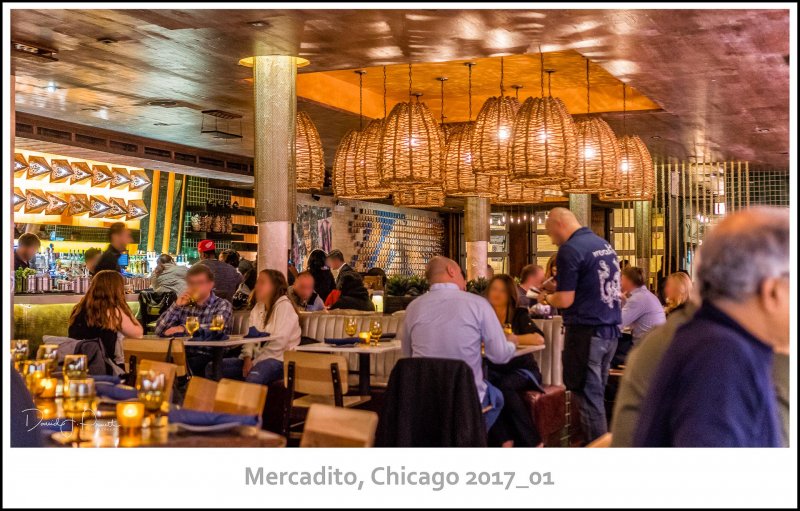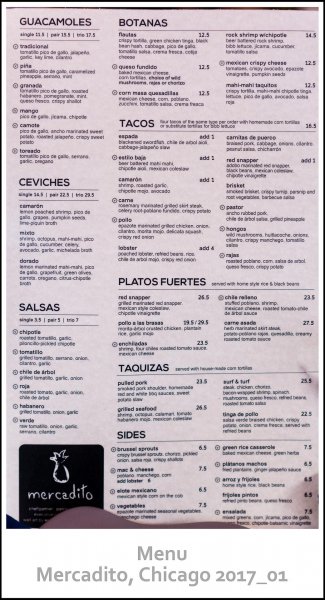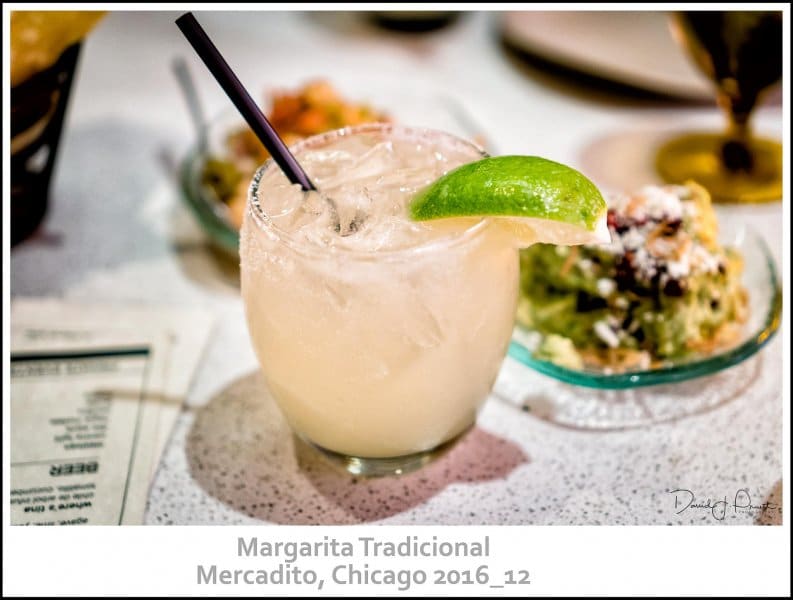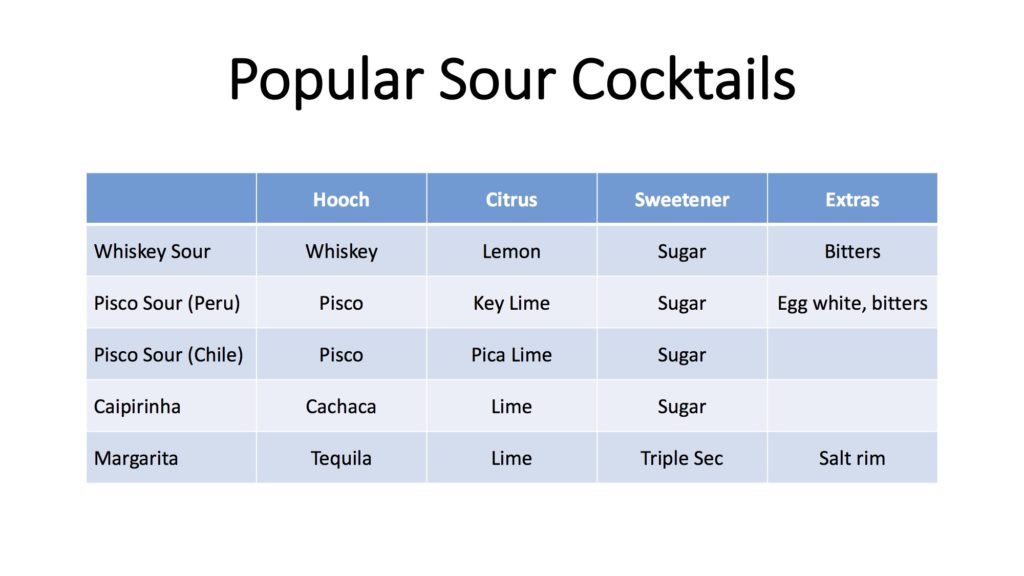One of the better trends in the United States (and around the world) has been the increasing diversity of the types of ethnic foods available in stores and restaurants. This is not only true in large cities, but also in small towns. To be sure, the quality and authenticity of the foods offered can vary greatly, but it has been a positive development overall. Mexican food has become more popular and, in many cases, more authentic in the US as we gringos have learned to appreciate the differences between Tex-Mex, Mexican, and the cuisines of other Latin American countries. No doubt the many Mexican and Latino immigrants have helped this trend along, but American chefs like Chicago-based Rick Bayliss have shown just how diverse and delicious the cuisines found in the various regions of Mexico can be. After almost 30 years, his upscale Topolobampo restaurant remains one of the hardest places in Chicago to snag a weekend reservation without some advance planning, despite the proliferation of outstanding restaurants in the city.
There are many inexpensive neighborhood Taquerias (taco joints) anywhere there is an Hispanic enclave. In these, you can get a generous portion of Mexican and Tex-Mex favorites to fill your belly, or perhaps a steaming bowl of Menudo (soup made from cow’s stomach, vegetables and chilis) to soothe your hangover. Between the Mom and Pop (Mamá y Papá?) joints and Bayliss’s Michelin-starred masterpiece are a variety of upscale restaurants serving Latin American foods. Some focus their menu on the foods of one country, like Peru (Tanta) or Argentina (Rural Society), but others offer a broader look at foods that are popular all over the countries to the south of our Mexican border.
I have traveled (and, more importantly, eaten) extensively in Mexico and South America and have enjoyed the local flavors in each country I visited. I have spent a lot of time watching Rick Bayliss on TV as he explores Mexico one region at a time (or One Plate at a Time). Still, I make no claim to be an expert on all of the nuances that make a dish “authentic” to each Latin American country. I can, however, tell you when I find the food to be delicious. Valeria and I recently discovered that the Mexican food at Mercadito is delicious. We paid our first visit in December 2016 and returned the first week of January, 2017. I’ll include drinks and dishes from both visits in this post.
The Mercadito concept was developed in New York City by Chef Patricio Sandoval, who was born in Mexico City. He opened the first Mercadito as a small taqueria. Eventually, there were three of them, all of which are now closed. The Chicago version is larger and more upscale than the originals. It opened in 2009 and it can still be a challenge to get reservations on weekends.

The menu features a variety of botanas (appetizers), ceviches (seafood “cooked” in citrus juice), guacamoles (avocado spreads), salsas and tacos (I’m guessing there is no one in the US who doesn’t know what tacos and salsa are). All of these are small plates, meant for sharing and enjoying with a cold cerveza (beer, but you probably know that one, too) or a tequila or mezcal-based cocktail.
There are also some Platos Fuertes (literally “strong plates” but meaning “big plates” in this context) and Taquizas (a platter with all the ingredients to roll your own taco) for those looking for a full plate of food.

There is also a long list of cocktails, Tequilas and Mezcals, along with a few beers and wines, to wash down whatever you chose to eat.

As much as I love wine, it is not a natural fit with Mexican cuisine. This is not surprising, as food and beverages tend to evolve to complement each other in any given country. Since Mexico does not have a grape-growing, winemaking climate or tradition (though there are wineries in Mexico today), the food was not developed to accompany wine. To be sure, an off-dry sparking (Prosecco) or white (Riesling) can work and you might enjoy many other wines with a Mexican dinner, but, in general, it’s not a natural fit.
Tequila and Mezcal did grow up with Mexican cuisine. The Aztecs made a fermented drink from the juice of the agave plant, a type of cactus that is indigenous to the dessert regions of Mexico. The Spaniards began to distill fermented agave juice not long after they arrived (1521). So the first Tequila was produced in Mexico before there was a Mexico and before the town of Tequila, which would give the liquor its name, was founded. Mass production of Tequila began around 1600 in modern-day Jalisco. The first commercial license to produce Tequila was granted by the Spanish king to a family names—can you guess?—Cuervo. (All together now: “Jose Cuervo you are friend of mine.”)
There are several varieties of agave. Tequila is made with the juice of the blue agave and premium brands use only blue agave. An agave plant must be grown and tended carefully to develop a fully mature, succulent core called a piña (“pineapple,” because a fully-ripened plant with its leaves removed resembles a pineapple). The piñas are roasted in special ovens to break down their complex sugars to simpler sugars. After roasting, the piña is shredded and the sugary juices extracted. Then yeast, the magic ingredient for making all fermented beverages, is added and the resulting low-alcohol liquid is distilled twice to produce Tequila Blanco (white, often called silver, Tequila). Silver Tequila can be aged in oak barrels (traditionally, used white oak Bourbon barrels from the US) for between 2 and 12 months to produce reposado (“rested”) Tequila, 1 to 3 years to produce añejo (“aged”), and four or more years to produce extra-añejo (also called reserva) Tequila. This is the same aging process by which fermented, distilled grape juice can be aged in oak to produce brandy, or fermented corn mash can be aged to produce Bourbon, and so on for Scotch, Rye, Rum or whatever your favorite brown liquor might be.
Want to know more about the process of growing agave and using it to produce and age Tequila? Here is a short video that explains it all.
The most famous Tequila cocktail is a Margarita, which could be called a “Tequila Sour” and is a proud member of a whole family of sour cocktails.
I discussed these in detail in my post on Rural Society restaurant in Chicago.
Most Margarita aficionados will suggest that silver Tequila is the best choice for their favorite cocktail because it brings the most actual agave flavor to the drink. A good añejo that has been aged for several years is delicious to sip straight up like a good Scotch, Bourbon or Cognac. A classic Margarita is made with a high-quality, silver Tequila, high-quality Triple Sec (orange liqueur; Cointreau is the best), fresh lime juice (key limes are most like the limes used in Mexico) and agave syrup as a sweetener (sugar syrup can be used, but agave nectar has become easy to find and reinforces the agave flavor that a Margarita is supposed to be about). Here is a professional bartender who explains the what, why and how much of each ingredient in the drink and with whom I agree completely. Your palate, of course, may be different.
So what about “Top Shelf” Margaritas made with aged Tequila, Grand Marnier, various other fruit juices, etc.? All of these things can be used to make delicious cocktails, but, purist that I am in this area, I would argue that they should not be called Margaritas, just like, in my opinion, any drink not made with gin, dry vermouth and a dash of orange bitters should not be called a Martini. (The correct name for a “vodka martini” is a “Kangaroo Kicker” or just a “Kangaroo.” Feel free to impress your friends with that one.)
Having said that, I recognize the need for bars and bartenders to sell drinks, and grouping all kinds of cocktails that contain Tequila (and some that don’t) under the category of “Margaritas” on a cocktail list is good for business. Nor do I object to you mixing your Margarita any darn way you like it. Even frozen, if you must, but a frozen Margarita is just a way to cover the taste of cheap ingredients or to get people who don’t like the taste of booze to drink booze.
If you have a few minutes to spare, here is a video showing three bartenders making three different “Margaritas.” The first is a simple, classic version. The second is very complicated, but has a cool technique for making a blue colored salt rim. The third is a cocktail that, in my world, has no relationship to a Margarita whatsoever—well, maybe an 8th cousin twice removed.
So how was the Margarita Tradicional at Mercadito? Delicious.

They do use Grand Marnier, but the high-quality Tequila with agave syrup can stand up to the additional flavors Grand Marnier brings to the party.
I had the same cocktail made with Mezcal instead of Tequila and I can highly recommend that variation. The smokiness of the Mezcal adds a nice additional nuance to the drink. (It seems to me that a Margarita made using Mezcal and not changing anything else should have it’s own name but, if it does, I couldn’t find it.)
What is the difference between Mezcal and Tequila? The biggest difference is analogous to the difference between Bourbon and Scotch. The malted barley that is used to make Scotch is often smoked over smoldering peat moss to yield anything from faint hint to a punch-you-in-the-face aroma of smoke. When making large volumes of Mezcal, the piñas that have been roasted are smoked before they are ground up and the juice extracted. Traditionally, however, Mezcal is produced by cooking small batches of piñas in underground pits, which cooks and smokes the agave in one step. The best Mezcals are still produced this way.
There are other differences between the type of agave used and the area in which it is grown. Tequila is made with blue agave from a specified area; Mezcal is produced from different agaves, including blue agave, grown over a larger area that overlaps with the Tequila area. Another bit of trivia: all Tequila is Mezcal, but not all Mezcal is Tequila.
Tequila drinkers often start with Tequila Blanco in cocktails, then learn to appreciate aged Tequila and, eventually, the more complex flavors of a good Mezcal. This is again analogous to someone who starts off drinking vodka and eventually moves up to gin, Bourbon or other whiskeys, and eventually to a smokey Scotch.
So what about the worm in your bottle of Tequila? Well, if there is a worm, it is Mezcal, not Tequila. And the worm is not a worm but the larva of a moth that lives in agave plants. Some producers started adding the gusano (worm) to to Mezcal in the 1940s or ’50s apparently as a marketing ploy. There is some evidence that the worm can add a faint aroma of fresh-cut grass (think New Zealand Sauvignon Blanc), but, for all intents and purposes, it’s just a novelty. You can impress (or disgust) your friends by eating it, of course.
Enough booze talk. Let’s eat, shall we?
Unlike many Mexican or Tex-Mex restaurants, Mercadito will not simply drop a basket of chips and a bowl of salsa on your table when you sit down. That’s because there is a whole list of salsas to choose from and the chips are not cheap, bulk-manufactured and bagged but are fresh and made in-house.


In two visits we tried four salsas: chipotle, tomatillo, roja and verde. Each one was delicious. All had a least of bit of heat, but none was outrageously spicy, at least to us. We have not tried the habañero salsa, which I would expect to be the spiciest. But the important thing was the intense, complex flavors in these salsas, not the heat. Chipotles, as many people know these days, are dried, smoked jalapeño peppers. The smoky spiciness of the chipotle peppers came through clearly in the Chipotle Salsa, but so did the flavor of the roasted tomatillos and garlic. The chipotles had been pickled in piloncillo, which is the Mexican-Spanish word for what is more widely called panela, which is raw cane sugar before any of the molasses has been removed. This added a touch of sweetness to the sauce, but it certainly was not sweet.
Tomatillos are also much more common in supermarkets these days. They look like green tomatoes wrapped in papery leaves, but they are more closely related to the gooseberry. Like tomatoes, tomatillos may be eaten raw or cooked. Grilling, as was done for the salsa here, adds a nice charred, smoky flavor. Add a touch of Serrano chili for heat and additional flavors from onion, cilantro and garlic and you have a second delicious salsa.

Not pictured here are the rojo (red) and verde (green) salsas. The Rojo salsa is the tomato-based version of the Tomatillo Salsa, using roasted tomatoes in place of grilled tomatillos and Chile de Arbol, a small, but spicy, red chile, in place of Serrano chiles. The Salsa Verde uses exactly the same ingredients as the Tomatillo Salsa, but the tomatillos are raw. All any of these salsas needs is some good chips to scoop them up. The house-made chips were perfect—not too salty and not greasy.
Another classic appetizer/condiment from south of the border: guacamole.

Guacamole is a very popular dip/spread/condiment. The basic combination of avocado, lime juice, salt, garlic, cilantro and various combinations of onion, cumin, cayenne pepper or chilies, and tomato usually strikes me as pretty bland texturally and often in flavor, which is interesting given all the strongly flavored ingredients.
There are many variations on the theme, but I have rarely tasted one as flavorful as and with the excellent texture of the Guacamole Granada at Mercadito. There is enough spice to make it interesting, but I can’t imagine too many people would find the heat objectionable. Pico de gallo (literally “beak of the rooster,” but often called salsa fresca or “fresh salsa”) is usually made with tomatoes, onions, chiles, cilantro, and lime, but Mercadito make a version with tomatillos, which add a different flavor. Mint adds a fresh herbal note while the pomegranate seeds (technically called “arils”) add some tart sweetness and texture. Crispy shallots add additional flavor and texture, while the sprinkling of mild, creamy queso fresco probably adds more visual appeal than anything else to this dish.
We tried the Guacamole Granada on our first visit and said we would do another one on the second visit, but we did not. It was just too good, so we ordered it again.
Something to bear in mind, though, is that Mercadito offers flights of both salsas and guacamoles. I have had many fights of wine (several small portions of wines poured side-by-side to taste and compare), but I have never done salsa or guacamole flights. We did a flight of two salsas on each visit, but you can order each salsa or guacamole on the menu individually, in pairs, or in a trio.
Flights of one, two or three ceviches, our next dish, are also available. We ordered the Ceviche Dorado both times, but the servings look quite different at least superficially, on our two visits.


Dorado in Spanish means “golden,” but on a menu it usually refers to a fish more commonly called mahi-mahi or dolphin fish (fish, not the mammal!). Ceviche has been a popular dish on the coast of countries from Mexico, down through Central America and across South America for centuries. It is a coastal dish because it is made with very fresh seafood that is “cooked” by cutting it up and marinating it in citrus juice. Lemon and lime are most commonly used, but grapefruit, orange and other citrus juices can also be added. The acidity of the citrus juice breaks down (“denatures’ is the scientific term) the protein in the seafood in a way that is similar, but not identical to, heating it. Nor does the citrus juice kill bacteria or parasite like heat does.
You can’t overcook fish in a ceviche, but the flesh can become very mushy if left too long in the citrus juice. Depending on how small you cut up the seafood, that can take 10 or 15 minutes (if cut very small), an hour or two, or a day or two (if it is a particularly firm-fleshed sea creature cut into larger cubes). In recent times, ceviche is often served within 2 or 3 minutes of adding the citrus juice so the texture is closer to Japanese sashimi than traditional Latin American ceviche. For me, when I want sashimi I will order sashimi. When I order ceviche, I expect the ingredients to have had some time together to work on breaking down the seafood and to let the flavors marry. But that’s just me.
As with salsas and guacamoles, the variation on the basic idea are endless. Seafood, lime juice and some chiles are the base, but you can use many kinds of fish or shellfish individually or in combination (Ceviche Mixto). Onions, cilantro, corn, celery, tomatoes, oregano, parsley, carrots and bell peppers, all finely diced or thinly sliced, are common, depending on the country and the cook. I don’t recall having olives in a ceviche before, but they were a nice addition. Nor can I explain why the two bowls of the same ceviche looked so different on the two visits. Maybe the recipe varies a bit with the chef or ingredients available on any given day, or maybe it’s just that it’s hard to make a mixture of solid pieces perfectly uniform and what comes out of a big bowl in any given spoonful will vary. Other than the red onions that were obvious in the December visit, the ingredients were the same and the flavor, as far as I can remember, much the same. This is outstanding ceviche.
House-made crackers are provided with the ceviche.

These were thin, crisp and relatively bland—just right for scooping up the ceviche.
I should mention that Mercadito is a casual restaurant. The courses do not come out in an orderly progression like a fancy tasting menu in a high-end restaurant (although you could order them that way). Virtually everything on the menu is designed and plated so that it can be shared. You can sit down, order a drink and 2, 3, or 4 items from the menu. Your selections will be brought to the table if not all at once, within a few minutes of each other so you can graze and chat with your dining companions at your own pace. When you finish the first round you can chose some more, call it a day, or ask for the dessert menu. It is very relaxed and date or group friendly.
We also tried several items from the Botanas (appetizers) section of the menu. How about some spicy shrimp?

Valeria and I both have a weakness for shrimp that are lightly battered, deep fried and bathed in a sweet and spicy sauce. We try them almost any time we see them on a menu. Granted, these do not appear on anybody’s list of health food items, but they can be delicious and Mercadito’s take is wonderful. The breading is light and the sauce is very flavorful—smoky, spicy, a touch sweet. Grab a piece of Bibb lettuce, add some shrimp, a bit of the shredded jicama and cucumber salad, and a dash of the tomatillo salsa (the same tomatillo salsa discussed earlier) and you have quite a mouthful of goodness.
We also ordered Queso Fundido (“Molten Cheese”: baked chihuahua & oaxaca cheese, corn tortillas and Mexican chorizo).

The Mexican cheeses with which I am familiar tend to be pretty mild, although there could be a whole world of them that I have not tried. The mildness could very well be by design, however. Given the generous use of chilies and other spices in many Mexican dishes, something that balances and even cools the heat is nice to have on the plate. Dairy products are quite effective at taming a runaway hot chili. Mild cheeses also provide an excellent backdrop for all sorts of bright flavors, so there is plenty of room in the world for other cheeses besides the big, smelly, strongly flavored blues produced in France and elsewhere (which I also love, but that another restaurant and another post).
The Chihuahua and Oaxaca cheeses in this dish are definitely mild. Both are cow’s milk cheeses. Chihuahua was originally made by Mennonites living in the state of Chihuahua where it is still called Queso Menonita (Mennonite Cheese). Oaxaca is also named after the southern Mexican state it was named after. The resulting mixture was a bit like Monterey Jack cheese with some Mozzarella tossed in. Take a house-made, warm corn tortilla, smear on some cheese and chorizo (a pork sausage flavored with native chilies and other spices) and some salsa and you have a very good cheese and chorizo taco. The only thing I might add to this if I made it at home is some sliced fresh or picked jalapeños, but that’s because I like things spicy and I think the cheese would keep the heat under control.
The third dish we tried in the Botanas section was Mexican Crispy Cheese.

Of all the dishes we tried over two visits, this is the only one that left us unimpressed. It looked good and certainly has all the right ingredients to grab your taste buds: fried cheese, avocado, tomato, toasted pumpkin seeds and an epazote vinaigrette (epazote is a popular herb in Mexico that is reminiscent of oregano, fennel, and thyme, though different than all of these).

It sure looked good, but, to us at least, it was completely overshadowed by everything else we tried.
Moving on to the Taco section of the menu, we just tried one, Tacos Estilo Baja (Tacos Baja Style or, as the are popularly known, Fish Tacos).

This is another terrific dish for sharing, and all the tacos I saw around us were served the same way: 4 mini-tacos on a plate. It is thought that people on the coast of what is now Mexico have been eating fish tacos—fish wrapped in a corn tortilla—for hundreds of years. The modern fish taco is said to have been developed in Baja, Mexico and is typically made with a firm, white-fleshed fish that is battered and fried, then served on a corn tortilla with the cabbage with a sour cream of mayonnaise-bases sauce and some salsa. You will find a million variations these days substituting different fish or other seafood that has been grilled or even steamed and dressed with a flavored creamy sauce (e.g, chipotle, avocado) and accompanied by all sorts of vegetables.
It’s good to remember that a taco is just a sandwich with a tortilla as the bread and pretty much anything you want inside. Just as you can take a couple of slices of bread and put anything you want between them when making a sandwich at home, you can do the same with a tortilla. You can even argue that, for potentially messy fillings, a tortilla is better than sliced bread as the tortilla can be carefully folded around the ingredients to minimize leakage. We are anxious to try some of Mecadito’s other tacos.
From the Taquiza (roll your own taco) section of the menu, we ordered the Surf and Turf.

The Surf and Turf Taquiza platter included beef, chicken, chorizo, mushrooms, bacon-wrapped shrimp, and queso fresco, all nicely grilled and kept warm in a hot cast iron skillet. Another supply of warm tortillas, refried beans and tomato salsa and you are just seconds away from a delicious taco.
This may look a lot like a fajita to you (me, too), but, technically, there is a difference. In Mexico, fajita (which means “little belt”) refers to strips of meat cut from the skirt steak, marinated and grilled. That’s all. Of course, the fajita is normally turned into a taco using all the fixin’s you are served at your favorite Tex-Mex establishment. These often include grilled peppers and onions, refried beans, sour cream, guacamole and, of course, tortillas. That whole presentation would be called a taquiza in Mexico. In the US, fajita has come to be synonymous with any grilled protein (beef, chicken, shrimp, sausage, pork) and additional goodies to roll up into a taco.
I have to say that writing about all this stuff makes me more than ready to go back. If you have read some of my other blogs, then you know that I love very high-end, Michelin 3-star tasting menus with a lot of fine wines to wash them down. However, those are not meals I would want to eat every day, or even every week and probably not even every month. OK, maybe every month. Or every two weeks. The menu at Mercadito, however, allows you to design your own “tasting menu” and visit for lunch or dinner several times a week without ever repeating a dish (unless you want to) without running up a huge bill.
To end as I started, I make no pretense that I can pronounce Mecadito to be “authentic” Mexican, but the food and cocktails are delicious and it is a wonderful place to eat with friends (or one special friend) and graze to your heart’s content.
Mercadito
Address: 108 W. Kinzie Chicago, IL 60610
Phone: (312) 329-9555
Reservations: opentable.com
Website: http://www.mercaditorestaurants.com/chicago/
Dress Code: Casual
Price Range: $30-50
Hours: Brunch: Saturday 11:00am-3:00pm & Sunday: 11:00am – 3:00pm
Lunch: Monday – Friday: 11:30am – 3:00pm
Dinner: Sunday – Tuesday: 5:00pm – 12:00am, Wednesday – Thursday: 5:00pm – 1:00am, Friday: 5:00pm- 2:00am: Saturday: 5:00pm – 3:00am
Credit Cards: AMEX, MasterCard, Visa
Chicago, IL 60654
The author has no affiliation with any of the businesses or products described in this article.
All images were taken with a Sony Alpha a6300 camera and a Sony-Zeiss SEL1670Z Vario-Tessar T E 16-70mm (24-105mm full frame equivalent) F/4 ZA OSS lens or Sony 35mm (52mm full frame equivalent) F/1.8 E-Mount Lens using ambient light. Post-processing in Adobe Lightroom® and Adobe Photoshop® with Nik/Google plugins.










